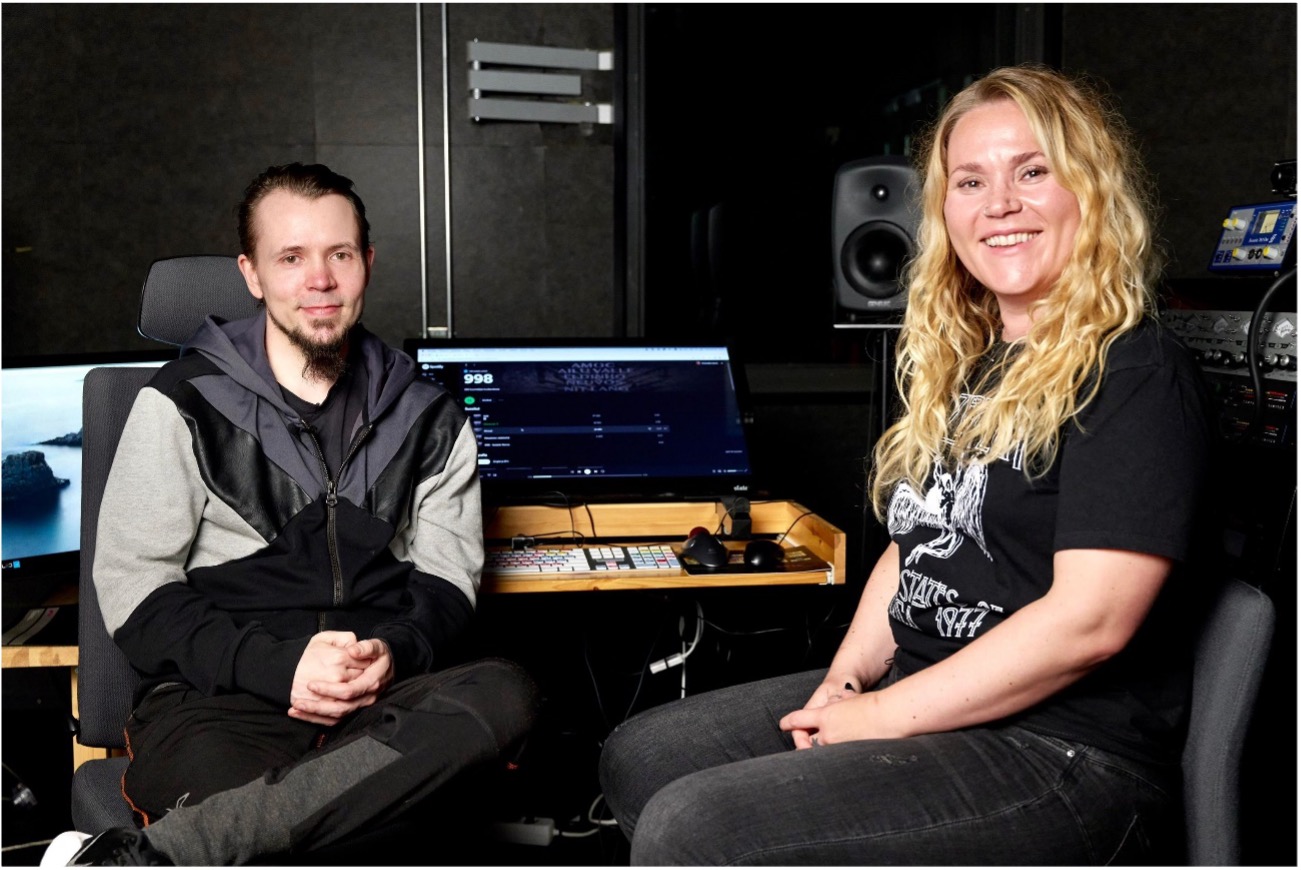Mikkal was born into a family of lnarisami language fighters. So it made total sense for him to be the worlds first Inarisami rapper. Ever. This year, exactly 15 years after his debut album Kaccàm, he releases his second album, a mix of Inarisami, Northern Sami and Skoltsami hip hop, under his alias «Amoc».
Inarisami rap revival
Mikkal Morottaja (37) was born in Inari, a beautiful, rural Finnish town, with a dying Sami language and culture. His father was the town mayor for many years, and his two brothers have been teachers and Inarisami language advocates for as long as he can remember.
Mikkal, however, made a more radical attempt to help revitalize the language and culture of the Inarisami people, through what he refers to as «hard core, aggressive, lyrical rap music.»

There is nothing aggressive about Mikkal in real life, though. So I had to dig deeper into his alter ego Amoc, to find out more about his love for the «aggressive» rap as a genre.
«I have always loved the aggressive, dark rap, such as Eminem, for example. I wanted to create an Amoc-universe. An alter-ego quite different from who I am outside the music sphere», Mikkal told me, when I interviewed him in his studio in Inari, in August this year. «Amoc is an acronym (Aanaar Master of The Ceremony) but it also refers to being crazy, the one who goes amok, so it was a way for me to be able to express all of my frustration and anger, in a constructive manner» he says with a smile.
And the birth of Amoc definitely didn’t go unnoticed. «People were often surprised by my sound and performance», Mikkal says. «They were astounded by the hardness and aggressiveness of Amoc. It isn’t really common to do this in Sami music in general, and not everyone gets the stories I tell, and the images I paint in my lyrics».
Nevertheless, Amoc has many fans and high status in different Sami cultures and organisations, and Mikkal frequently makes music installations and videos in collaboration with Siida Sami Museum and Sami Cultural Center Sajos, in Inari.
Sami melting pot
Amoc has done a lot of shows the last 15-20 years, especially in Finland and Norway. When I met him in August, he had just been one of the headliners at the indigenous culture and music festival Riddu Riđđu in Kåfjord: Fullspekket Riddu Riđđu | Riddu Riđđu
Amoc frequently collaborates with other Sami musicians and rappers, especially Ailu Valle, who mainly raps in Northern Sami: https://open.spotify.com/track/5vbAKJWVb7TtSo7WYmzKfW?si=8c48b1713422453f
The Sound of Amoc
Mikkal refers to the Amoc sound as «horror rap», which includes both the tales of Sami mythology and scary creatures. When I met him in Inari, he showed me the spot where he writes his lyrics. Appropriately enough, this spot is just outside the cemetery of Inari.

When you first listen to Amocs rap, you may think it sounds like Finnish. But in fact, Inarisami is closer to the Northern Sami language, which is one of the Sami languages most commonly spoken in Norway. Most people outside the Sami community don’t know that there are several Sami languages spoken today. The most common in Norway are Northern Sami, Lulesami, Pitesami and Skoltsami. The last one is quite frequently spoken in Inari as well, but is very different from the Inarisami language. Mikkal, who also works as a technician at Sami Cultural Center Sajos, speaks Finnish with his Skoltsami colleague, due to language barriers. But that doesn’t stop him from engaging in different Sami music collectives, as his latest project and upcoming album is a mix of Inarisami, Northern sami and Skoltsami.
Mikkal was a lonely pioneer twenty years ago, but is positive in regards to the future of Inarisami music, language and culture. «The Sami music scene is blossoming, and that accounts for the Inarisami music as well. I’ve always wanted there to be more Inarisami rappers than me, and I’m super happy to see younger artists taking the scene»
Mikkal is turning 40 in a few years, but Amoc isn’t ready for retirement just yet.
Luckily for us.
I’ve listened to Amoc for quite som time, even though I don’t speak or understand either Finnish or any of the Sami languages. There’s just something about the pace, flow, and temper, that sucks me in, into the Amoc-universe. And I strongly advice you to check it out yourself.
My top 5 recommendations from the Amociverse:

